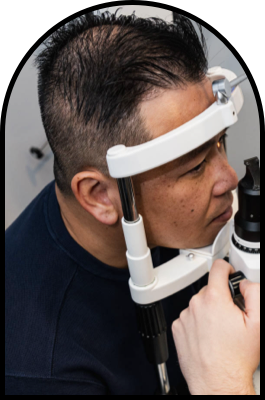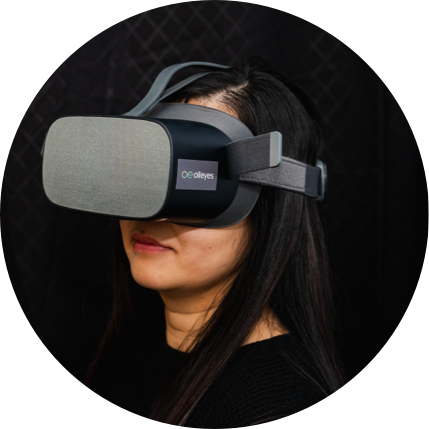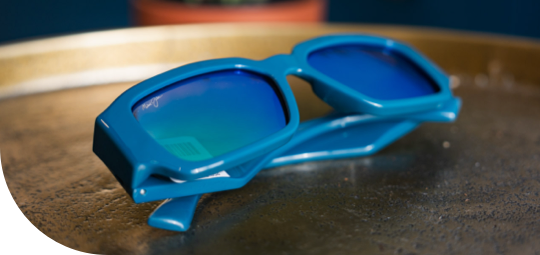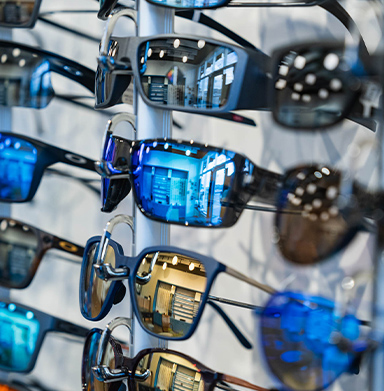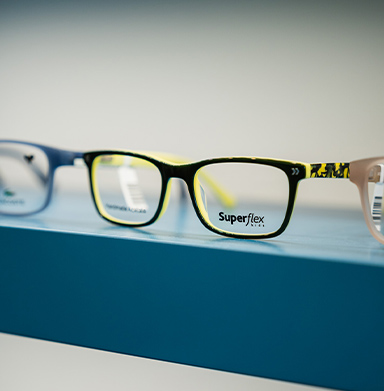Despite being so small, our eyes are powerful machines. If your vision is blurry or fuzzy and you or your child come in for an eye exam, there’s a good chance you’ll discover you have a refractive error.
A refractive error is a broad category of conditions in which the eye cannot clearly focus light, usually treated through a variety of corrective lenses or surgeries. If you notice any changes in your vision, the best thing you can do is contact your local optometrist. Your eyesight is invaluable and must be taken care of. Part of that is understanding how your eyes work and what can go wrong.
How Do Our Eyes Work?
The human eye allows us to see by taking in light and sending it to our brain to be converted into images. Several parts work together in this process, but it all relies on the concept of bending light rays. This is known as refracting light.
When light first enters the eye, it passes through the cornea. This is the clear dome covering the front of the eye. These light rays are refracted, focusing towards a point as they pass through a small circular opening in our iris, the pupil.
Next, the lens focuses this light further into the retina. This is a light-sensitive tissue on the back of the eye. It’s covered in millions of cells called rods and cones which give us our night vision and our colour vision. These cells convert the light into electrical signals that are sent through the optic nerve to the brain.
This process is repeated constantly for each new input of information. It’s complex and requires the coordination of every part of the eye. But what happens when it’s disrupted?
Types of Refractive Errors
A refractive error is a vision problem that occurs when the shape of the eye is irregular and causes light to not focus directly on the retina. This can be due to a combination of genetics or environmental conditions. Depending on how the eye’s shape is changed, it can result in different types of refractive errors.
Myopia
Also known as nearsightedness, myopia is one of the most common refractive errors in the world. Myopia commonly occurs when the eye is too long, causing light to focus in front of the retina instead of directly on it. When this happens, far-away objects will appear blurry, while close-up objects remain clear.
Myopia can be inherited, so children with parents that have it are at high risk of developing it themselves. It can present while you are still young, which is one of the reasons regular eye exams are suggested for children. If caught early enough it’s possible to slow or even halt the progression of myopia as children age.
Hyperopia
As myopia is known as nearsightedness, hyperopia is called farsightedness. It occurs in the opposite way that myopia does. Rather than being too long, the eye is instead too flat. Light focuses behind the retina, causing close-up objects to be blurry, while far-away objects are clear.
Many people have some level of hyperopia without even knowing it. Unless it severely limits your ability to see, this type of refractive error doesn’t always require treatment. However, that decision is best left to a conversation with your optometrist.
Astigmatism
If you imagine your eye like a perfectly round basketball, astigmatism occurs when your cornea takes on a more oval-like football shape. This causes the light passing through your eye to scatter and focus on multiple points on the retina instead of a single one. In this case, vision can be blurry at all distances.
The risk of astigmatism can be passed down from your parents. But, it also could be the result of eye disease or surgery and can occur alongside myopia or hyperopia.
Presbyopia
Presbyopia type of progressive refractive error that occurs with age. It’s a normal condition in which your eye’s lens loses its elasticity. This results in difficulty reading or seeing objects that are close up.
Treatment for Refractive Errors
Depending on the type of refractive error, there are several options for treatment. Since everyone’s eyes are unique, your specific options will depend on your needs or preferences. Whether you end up with eyeglasses, contact lenses, or surgery, treatment will be personalized for your unique vision.
Eyeglasses
For many people, a simple pair of corrective lenses work best. They’re simple and safe, and if your condition is mild enough they’re a non-intrusive way to correct your vision when you need it. These days there are many options for styles once you’ve gotten your prescription.
Finding your proper corrective lenses will require a vision test in which your eye’s refractive score will be measured. This is a test of how well your retina can refract light, followed by an exam using a phoropter. Using a series of lenses you’ll read off a letter chart, letting your optometrist know when you can see clearly.
Contact Lenses
Much in a similar way to glasses, contact lenses refract incoming light to accommodate for your own eye’s errors. Some people prefer contacts to eyeglasses because they offer a wider field of vision or they find them more comfortable.
Because contact lenses sit directly on your eye, you’ll need to have your lenses fitted for you. Certain eye conditions can result in being unable to wear contacts.
Refractive Surgery
Also known as laser eye surgery, refractive surgery is done by permanently changing the shape of the cornea. Several different types of this surgery exist, and the best one for you depends on your specific needs.
One of the most popular ones you might have heard of is LASIK. This surgery works by peeling back a layer of the cornea and removing tissue from the inside, potentially restoring the eye’s focusing power. There’s also photorefractive keratectomy (PRK). In PRK the tissue is removed from the outside of the cornea.
In either case, tissue is removed from the cornea, meaning it’s typically not viable for people with already thin corneas or other eye conditions. As always, you’ll need to consult with your optometrist to determine which surgery, if any, is best for you.
The Best Treatment for Your Eyes
There is no one best treatment out there. Whether you have myopia, hyperopia, astigmatism, or presbyopia, the only way to understand your options is to discuss them with an eye health professional.
Chestermere Optometry has been serving the community for over 15 years, providing options that consider your unique needs, lifestyle, and preferences. If you have any of the refractive errors we have talked about, and you’re looking for a solution, book an appointment today.





